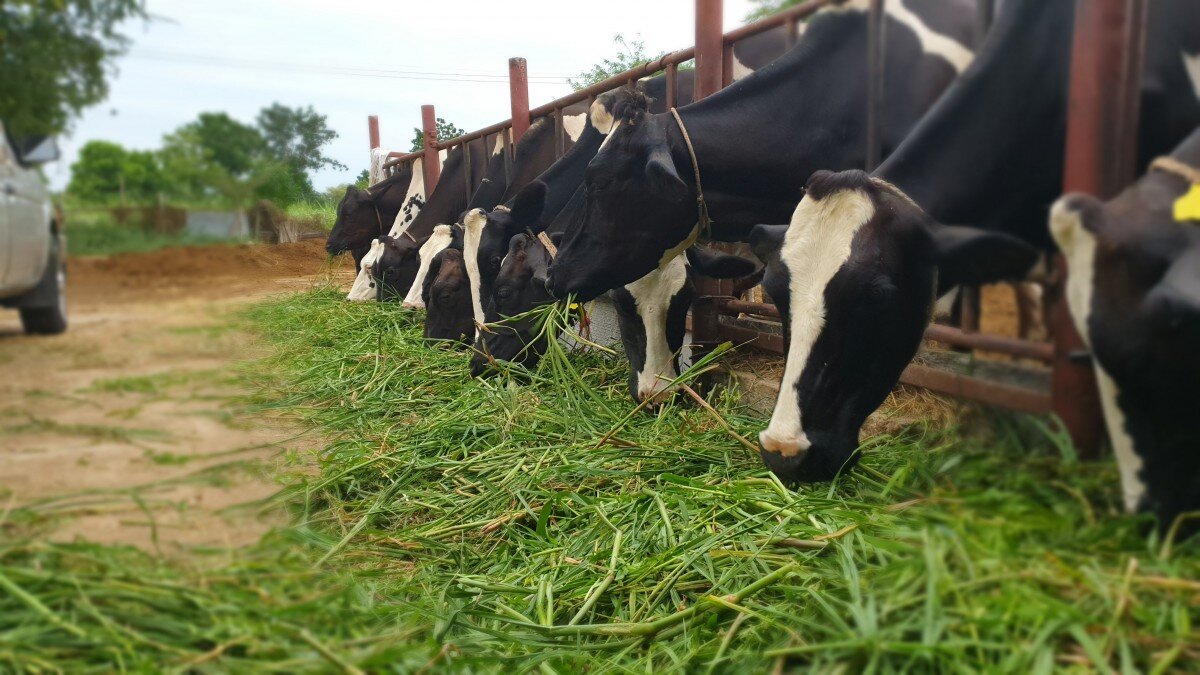
Behind the dry quiet serene environment in Ruiru is the story of perseverance and roaring success of a young couple that was united by their love for cows, their resilience at the loss of dozens of their herd to Foot and Mouth Disease, and their triumph to create a dairy business empire.
Moses Njoroge, now in his early thirties loved animals after he couldn’t get complete his education having lost his parents. With no other means of survival, he started hawking eggs in the neighbourhood. It would be a matter of time before someone noticed his dedication and decided to give him a job as a milk delivery man. Moses would pick the milk from farmers and deliver it to various hotels in the Githunguri area of Kiambu, a job he religiously committed himself to. But things would go south when failed rains took a toll on pasture and farmers could no longer supply enough milk.
With his job on the line, but his determination intact, he decided to start his own dairy farm. With the proceeds he had saved from his milk delivery job, he rented a small piece of land in Kiserian. He bought five beef cows from the local Maasai herders at a cheaper price. His gut feeling however told him that money was in dairy. He sold the five beef cows and purchased an equal number of dairy cows. “And I was right to stick to the dairy cows. The business was picking up quite well. I had to look for a bigger space because I was expanding the herd and had managed to get it to 21 dairy cows,” he said.
Related News: Kiambu dairyman raises milk output, reduces treatment costs via breeding
Related News: NGO looking to train young Kenyan dairy, poultry, livestock agripreneurs
But his ambitions would be short-lived when in 2005 a major Foot and Mouth disease outbreak took a toll on his cows killing eight. He had to sell another eight since they were weak and were not producing enough milk.
But his determination would not allow him to give up. He bought three more dairy cows. He would later enroll in farmer seminars and training. It was here that he learned how to make extra income from manure which he would sell. But from those pieces of training, he would meet something bigger; something that has been pivotal in his current business A lady who had an equally strong love for dairy cows. Their lengthy discussions brewed love, which ended up in marriage. “My father was very supportive of us and gave us space to pursue our dreams. She had her cows and I had mine, which we merged and decided to form our dairy company which we now call Willbet Dairies,” Moses said.
But ghosts of the past would come to haunt them, and in 2009 they lost 50 of their cows to Foot and Mouth disease. Undeterred they decided to buy an extra 50.
And in the quiet one acre in Ruiru now lies the story of resilience and determination, exemplified by 70 high-yielding cows which produce over 400 liters of milk dairy which is supplied to major hotels and shops in Nairobi and Ruiru.
Related News: Meru dairy farmer banks on genetics to turn profit as feed costs rise
Willbet Dairies also exports its cows to neighbouring Burundi, Uganda, Zambia, and Malawi while supplying beef to Kenya Meat Commission. The good genes of the cows, which include Jersey, Fresian, and Crossbreeds, have been the secret that has won over more customers.
Having employed nine workers years after being employed to hawk milk, it has been a milky way for the young farmer who encourages youth to turn to agriculture for jobs and wealth. “I am living testimony that money is in agriculture. There is nothing as unemployment for our youth, anyone unemployed has chosen to be. The world of opportunities awaits you,” he said.
Write comment (0 Comments)

















